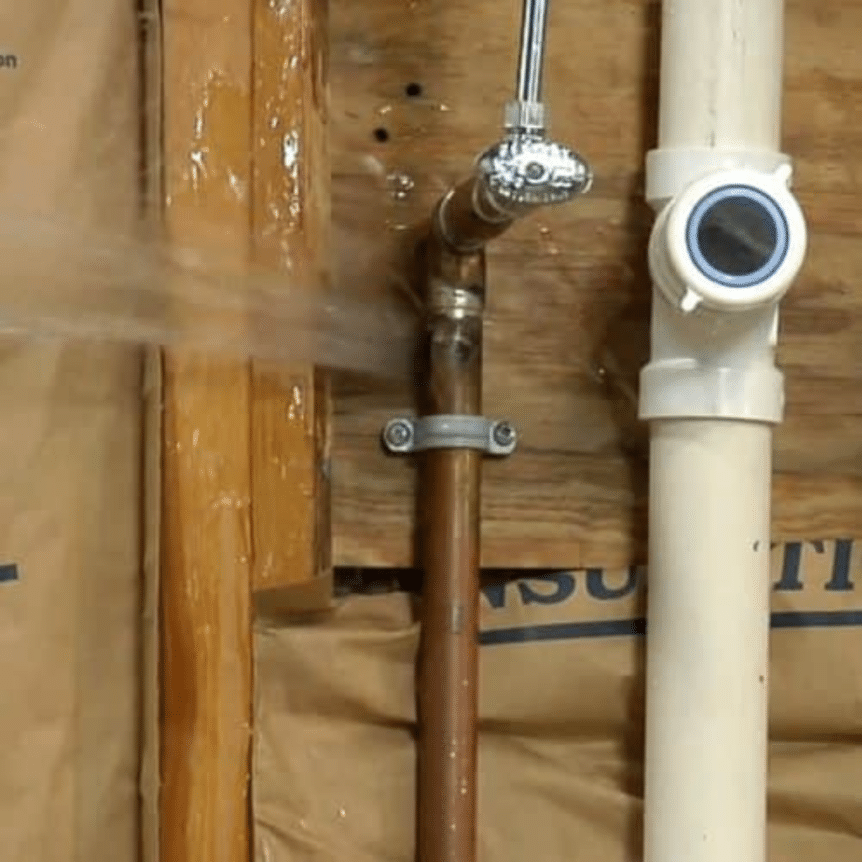Living in the Coachella Valley comes with many perks. From enjoying our beautiful sunny days to the endless outdoor activities, it’s no wonder why so many call this region home. Unfortunately, living here also means being at greater risk for water damage emergencies like rain flooding and broken pipes – which can be devastating if not properly prepared for. Whether you’re a new or experienced homeowner, having an understanding of common water-caused damages along with products/processes needed to adequately protect your home is essential. Below we’ll share five tips to help arm you and your family with resources best suited to handle whatever may come your way during a time of crisis.
The importance of water damage prevention.
Living in the Coachella Valley has its share of both benefits and drawbacks. The area is known for its beautiful desert scenery, stunning mountain views, and a great deal of recreational activities. However, the dry climate can lead to a number of problems – from dust storms to water damage prevention issues.
Water damage prevention is especially important when it comes to living in the Coachella Valley due to the dry climate and lack of rainfall. This can lead to a buildup of moisture in confined spaces like attics or crawlspaces, which can create an environment conducive to mold growth. The best way to prevent water damage is through regular maintenance and inspections, such as checking roofs for leaks or inspecting gutters for blockages. Additionally, homeowners should ensure that all pipes are well insulated so that they do not freeze during cold winter months. Additionally, it’s essential to repair any cracks or holes in walls or foundations that could allow moisture inside the home.
Overall, while living in the Coachella Valley offers plenty of fun activities and beautiful views, it’s important that homeowners remain vigilant when it comes to water damage prevention measures. Taking simple steps like maintaining roofs and pipes can help keep your home free from potential hazards like mold growth and other forms of water damage.
Tip #1: Identify Common Water-Caused Damage Types
Water damage can be one of the most serious and costly issues a homeowner faces. The cost of repairing water-caused damage can quickly add up, but knowing how to identify the types of water-caused damage available can help you prevent, mitigate, and repair them.
The first type of water-caused damage is structural or property damage. This can include anything from broken pipes to flooding; or any situation where water has infiltrated your home and caused physical destruction. This could include rotting wood, stained drywall or carpeting, warped floorboards and ceilings, cracked tiles or stone floors, rusting metal fixtures, and more. In cases like these, it’s important to act quickly to prevent further destruction and hire a professional to assess the situation as soon as possible.
The second type of water-caused damage is mold or mildew growth. These fungi thrive in humid and dark environments that are warm enough for spores to grow and cause an infestation throughout your home. For example, wet basements or bathrooms with poor ventilation that stay damp over time are prime spots for mold growth. It’s important to keep an eye out for the telltale signs like musty odors, and discoloration on walls or ceilings before it gets too bad — if left unchecked it can cause serious respiratory health issues for those living in your home as well as being costly to eradicate!
The third type is condensation buildup—which occurs when moist air comes into contact with cold surfaces such as windows, walls, or pipes during cool temperatures. This causes moisture droplets that seep into walls or other areas which can lead to wood rot, staining of materials like wallpaper or even electrical shorts if not taken care of swiftly! The best way to combat this is by providing adequate insulation between cold surfaces and warm air (e.g., double-glazed windows) so that moisture won’t collect on these surfaces.
Finally, there’s standing water which occurs when there isn’t adequate drainage in basements or crawl spaces due to clogged gutters or other means — leading to flooding in extreme cases! The best way to avoid this is by making sure your gutters are cleaned regularly and maintained properly throughout the year — plus making sure any excess rainwater is diverted away from foundations with proper drainage systems in place!
Being able to identify common types of water-caused damage can help you protect your home from further destruction down the line — so take some time now before it becomes too much trouble later!
Tip #2: Invest in Proper Insurance Coverage for Water Damage Situations
Water damage can be incredibly expensive to fix, and it’s important to make sure that you are properly covered in the event of a disaster. Investing in the right insurance coverage when it comes to water damage is essential if you want to protect your property and wallet. There are two types of insurance coverage available for water damage: protection against physical loss and liability protection.
Protection against physical loss is designed to cover any damage done to your home or belongings due to flooding, burst pipes, or other accidental water-related incidents. This type of policy covers both repairs necessary after the incident as well as replacement costs for any items damaged beyond repair. It may also include coverage for cleanup services and legal costs associated with the incident.
Liability protection is designed to cover any damages caused by a leaky pipe or overflowing appliance on another person’s property. This type of policy usually includes coverage for medical bills if someone was injured due to the water-related incident, as well as legal fees if there is a lawsuit related to the incident.
It’s important that you choose an insurance provider that offers both types of coverage so that you are fully protected in case of a water-related emergency. Be sure to ask about special discounts or incentives offered by different providers before making your decision. Investing in proper insurance coverage now can help save you from costly repairs down the road if a disaster were ever to strike your home or business.
Tip #3: Utilize Quality Flood Protection Products & Processes
When it comes to protecting your home and property from flooding, utilizing quality flood protection products and processes is essential. The right combination of protective materials and techniques can help reduce the risks associated with flooding and minimize any potential damage. For example, installing flood barriers or sump pumps in areas where water could enter can help prevent water from entering the home. Additionally, using sandbags or other protective materials around the perimeter of your house can help keep rising waters away from your property.
In addition to these physical measures, having a plan for how you would respond in the event of a flood is also important. This may include knowing how to turn off any gas lines or electricity that could potentially be affected by flooding, as well as having an emergency kit ready with gear like flashlights and first-aid supplies just in case you need them. It’s also a good idea to have a list of contact information for local disaster relief agencies so you know who to call if needed.
Taking some proactive steps now can save you time, money, and stress later if a flood does occur. Investing in quality flood protection products and creating an appropriate plan will help ensure that your home remains safe during severe weather events.
Tip #4: Hire Trained Professionals like Distinctive Restoration to Handle Water Damage Emergencies


Water damage is one of the most common home disasters, and it can have serious implications if not addressed quickly and correctly. While DIY solutions may seem attractive at first blush, attempting to handle a water damage emergency by yourself can lead to further problems down the road. That’s why hiring trained professionals like Distinctive Restoration is the best option for any water damage emergency.
Distinctive Restoration has been in business for more than 13 years and has a reputation for providing exceptional service when it comes to water damage restoration. Their experienced team will assess the extent of the damage, identify sources of moisture and evaluate the need for repairs or replacements. They specialize in both residential and commercial water damage restorations and are available 24/7 to respond to emergencies.
As soon as Distinctive Restoration arrives on-site, they begin extracting excess water with high-powered pumps and vacuums before monitoring air quality levels with sophisticated equipment. As they dehumidify rooms, they can also help you move items out of harm’s way as well as provide detailed documentation outlining all work performed during their visit. Afterward, Distinctive Restoration offers a variety of additional services such as deodorization, odor control treatments, antimicrobial cleaning agents and structural drying techniques.
With their expertise in the field of water damage restoration, you can trust that Distinctive Restoration will help restore your home to its pre-loss condition efficiently and effectively. Avoiding costly mistakes that could arise from attempting DIY repairs means you can save time and money while protecting your home from further damages or health hazards caused by flooding or other mishaps.
Tip #5: Keep Your Home Regularly Maintained & Protected From Water Damage Risk
The fifth tip for protecting your home from water damage risk is to keep it regularly maintained. This includes regular inspections and checkups to address any underlying issues that may arise. Inspecting the roof, walls, floors, windows, and other areas of the house can help you detect potential problems before they become severe. Additionally, checking for any potential leaks or other vulnerabilities should be done at least twice a year. Additionally, you should be sure to clean out gutters and downspouts regularly as clogged gutters can result in overflows that can cause extensive water damage to walls and foundations.
At the same time, preventive measures are key when it comes to avoiding costly water damage repairs. Installing sump pumps and waterproofing your basement or crawl space can help prevent flooding in these areas while installing roof flashing around chimneys or vents can help reduce damage caused by wind-driven rain. Regularly inspecting the exterior of your home for cracks or other weak points is also important as these can provide an entry point for water during heavy rains or storms. Finally, consider having a professional inspect your home annually for signs of water damage as early intervention can often save thousands of dollars in repair costs later on.
Are you prepared for Water Damage Emergencies?
When it comes to water damage emergencies, it’s important to be prepared. Water damage can lead to serious property and health risks, so having an emergency plan in place is essential. Being prepared for a water damage emergency means taking the necessary steps beforehand to ensure that you are able to mitigate the impact of any potential water-related disasters.
When it comes to being prepared for a water damage emergency, the first step is making sure you have the right equipment on hand. This includes items like mops, buckets, and sponges for soaking up excess water; dehumidifiers for eliminating humidity; vacuums for removing standing water; and protective clothing such as gloves and goggles. Having these items ready will help you respond to a water disaster quickly and effectively.
It’s also important to take steps now to make sure your home is protected from potential flooding or other sources of water damage. If there’s any chance that water could enter your home or business premises, consider waterproofing any vulnerable areas with sealants or plastic sheeting. This will help prevent significant issues down the road if a flood should occur – something that can otherwise cause extensive property damage and disruption.
In addition to having the right equipment ready and protecting your home from potential flooding, it’s also important to know where your main shut-off valves are located in case of an emergency. Knowing the location of your main shutoff valves will allow you to turn off the flow of incoming water quickly if needed – thus minimizing any further damage that might otherwise occur.
Overall, being prepared for a potential water-related emergency is essential for keeping property and people safe from harm. By having the right equipment on hand, taking steps now to protect against flooding, and knowing where your main shut-off valves are located – you can be sure that you’re well-prepared in case disaster strikes!

Living in the Coachella Valley is both a blessing and a curse. There are many wonderful benefits that come with calling it home, but our region also produces many risks including natural disasters and water-based problems. While you may never be able to prevent every single water emergency situation, being prepared and knowing what to do ahead of time can go a long way towards mitigating potential damages. As discussed throughout this post, there are several measures you can take to reduce your risk of water damage: identify common sources of damage, invest in appropriate insurance coverage, utilize high quality flood protection materials and processes, hire trained professionals for repairs or emergencies when needed – and also just generally keep an eye on the house and make sure regular maintenance is taken care of. And remember, if disaster ever does strike, no matter how small or large the task may be, Distinctive Restoration has you covered – call us at 760 989 4179 for any questions or emergencies you may have!

